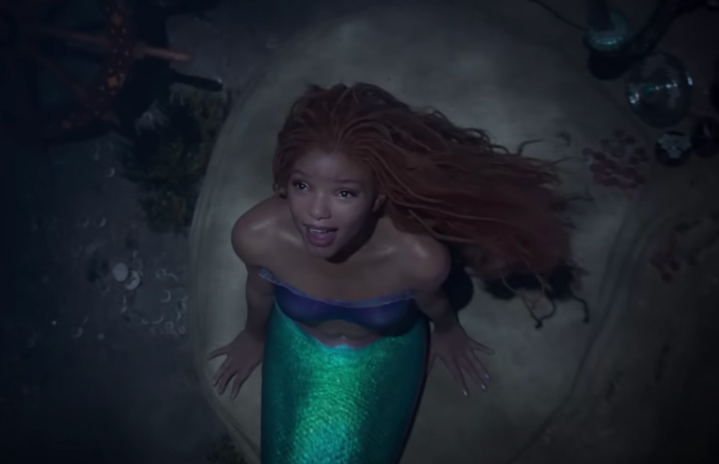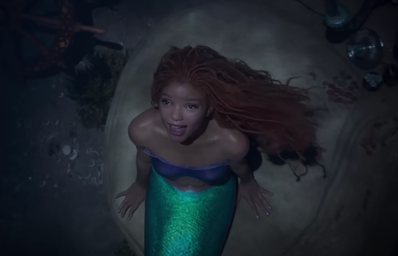After the exciting announcement that a live-action remake of The Little Mermaid was set to be released in May 2023, an avalanche of different reactions circulated the internet. These opinions ranged from overjoy, to slight disinterest, to flat-out racism. But what is causing such reactions and what is the history behind Disney’s reimagining of classic stories?
Disney Vault and Live Action Remakes
For many of us, The Walt Disney Company is tied with core childhood memories. I remember spending hours watching Disney Channel or singing my favorite Disney princess movie songs (mine was Part of Your World). As a result, a lot of people feel a need to keep these memories intact, be it for better or worse. Some examples of this phenomenon include the public outrage that ensued when Disney decided to release their many sought-after animated titles on VHS, or the changes occurring inside the parks to erase its controversial past, like Magic Kingdom’s Splash Mountain ride.
However, no company can survive without innovation or finding ways to maintain their core audience while simultaneously attracting new consumers. A strategy used by Disney has been to explore their catalog and create a variety of sequels, remakes, and spin-offs of their iconic material because it’s easier to build upon an already established story. Live action remakes of their animated films weren’t very common, with just a couple of exceptions like the movies of Rudyard Kipling’s The Jungle Book and 101 Dalmatians. Nevertheless, with the success of 2010’s Alice in Wonderland, the company decided to widen their Disney Vault remakes.
An ever-increasing concern is the excessive number of remakes within Disney’s current release calendar and the writing of each movie. Some of their remakes leave much to be desired. Especially when the writers try to fix the points of criticism made of the original material by adding social commentary and unimaginatively breaking the fourth wall. Take for example, the movies 2017’s Beauty and the Beast and 2022’s Pinocchio. Unfortunately, both lack the charm of their original counterpart. They have uncanny CGI, seemingly perfect protagonists lacking any character flaw, and dull storytelling that adds little to its original source. Ultimately, these stories can feel uninspired and make the audience believe they’re being talked down to. Thus, the creators of these remakes need to focus on the message of the story, what made the original so special and expand upon that. Correcting past mistakes can be possible, but it all depends on its execution.
Backlash, Discrimination and Criticism
In 2019, Disney announced that Halle Bailey would play Ariel in the live-action remake of The Little Mermaid. Most audiences were delighted with the announcement; however, there was a hostile response rooted in racism and white supremacy that expanded upon the release of the teaser trailer. The discrimination was viewed within social media with the hashtag #NotMyAriel. Scientific discussions of the melanin of a mermaid or the dreaded discussion of the false erasure of redhead characters. Nevertheless, the reality is that there’s plenty of space for all representation. The original 1990’s movie still exists and can be viewed on Disney+ at any moment. It should never justify harassment towards the actors from people who disagree with the casting because of a character’s skin color. Fictional stories can be represented in whatever form the writer desires, because, at the end of the day, it’s a work of fantasy.
Impact of Representation
In an interview with Variety, Halle Bailey expressed the importance of her role in the movie stating, “I want the little girl in me and the little girls just like me who are watching to know that they’re special, and that they should be a princess in every single way.” Representation of all forms is important, especially in children’s stories as they impact a child’s development. As showcased in studies, representation helps children understand the reality of our diverse world, which improves their respect for other communities and increases their ability to show empathy. As a child, I remember watching the 1997 TV adaptation of Cinderella starring Brandy and Whitney Houston and feeling something unprecedented was being made. The movie was a rite of passage for many viewers, continuing to have an impact for more than 20 years later.
In Cinderella: The Reunion, A Special Edition of 20/20, Brandy mentioned how she felt ugly growing up within white beauty standards. Nonetheless, her having become the first Black Cinderella was both mind-blowing to Brandy and a realization for many audiences that fairytales could be retold in imaginative ways. Bailey’s Ariel will have the same effect within the newer generations of little girls and boys who will feel seen and represented in an iconic Disney tale. The reimagining of Disney classics and fairytales showcase the magic of storytelling where anything is possible. The result can be a story beloved by future generations if it is created with care and appreciation for its original source. Likewise, this wave of representation should also allow newer, more diverse stories to be told.


